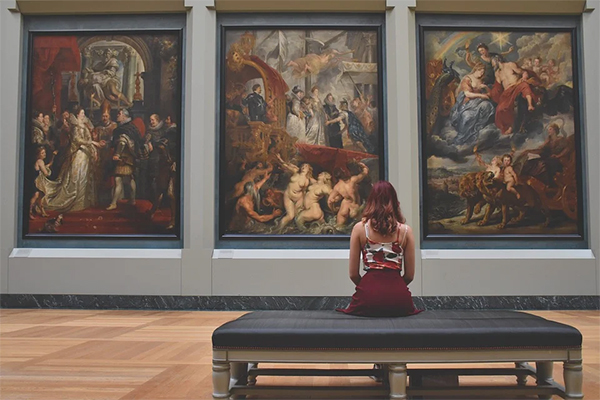
When news of the Mona Lisa being smeared with cake became viral, a lot of people were shocked that such an outrageous stunt got past the vaunted security of the Louvre. The video of the man coming close to the priceless artwork and defacing it with cake sent shivers down countless spines as many thought that Leonardo Da Vinci’s work would get damaged permanently. However, since the masterpiece was encased fully in bulletproof glass, the attempt was unsuccessful and was chalked off as attempted vandalism.
However, it got people thinking. With museums all over the world displaying priceless works of art for people to see, just how do they protect them from similar actions? Knowing that exposure to sunlight, air and humidity will also affect the quality of the art piece, how do they preserve the integrity of such masterworks?
Climate controlled environs
If you notice, most museums have climate-controlled rooms which house their collection. This is so because ambient temperature and humidity fluctuations will significantly affect the paint quality and the masterpiece’s material. Rooms are kept at a suitable temperature to prevent wear and tear from forming in the art. In addition, the environment prevents artworks from fading, crumbling or basically degenerating due to age.

Special glass
Most masterpieces can be found underneath the special glass. This glass protects the artwork from oily and dirty fingers and prevents the effects of harmful ultraviolet rays and other ambient humidity. People will still get to appreciate the painting, but they would have to view them from behind such protective layers.
Vibration sensors
Curious onlookers can sometimes get the better of restrictions and still try to come closer to the artwork they find interesting. Most museums use vibration sensors on the floor to signal a control room notifying the guards about such dangers. Then, they’ll quickly dispatch their security personnel to prevent the onlooker from coming closer.
Motion sensors
Motion detectors work with vibration sensors to alert the security personnel about people coming in too close for comfort. In addition, these sensors usually warn people that they’re overstepping their boundaries with flashing red lights or alarms.
LED lighting
Before using LED light fixtures to illuminate masterpieces, museums needed to use special filters for incandescent lighting to prevent UV rays from damaging the art piece. Nowadays, with LED bulbs providing better illumination, museums need not worry too much and can focus on the angles and how best to showcase the art.
Air system, sprinklers and movable walls
The threat of smoke coming into contact with artwork is quite real, and if it happens, it will affect the paint on the masterpiece. This is why museums also use an air system which draws smoke away from the interior to prevent damage. Also, while fire mitigating systems such as sprinklers are present, they’re usually kept dry to prevent leaks. Finally, movable walls are also important so museum workers can wall off any section as necessary.
Conclusions
There are several ways in which museums protect their priceless artwork. Onlookers and visitors need to respect the rules to prevent damage from happening.
Photo Attribution:
1st and featured image from https://pixabay.com/photos/museum-art-exhibition-frame-2602957/
2nd image from https://pixabay.com/photos/woman-art-creative-relaxation-girl-1283009/

